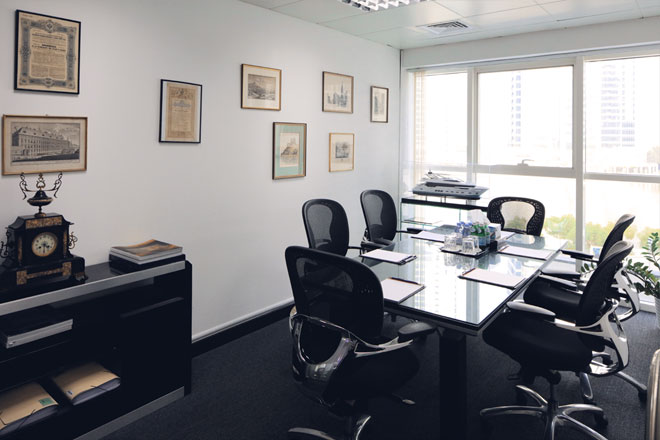
Persian Gulf states, Persian Gulf Arab states or Arab states of the Persian Gulf are the labels related to Bahrain, Kuwait, Saudi Arabia, the Sultanate of Oman, Qatar and the United Arab Emirates. These states are members of the Cooperation Council for the Arab States of the Gulf (CCASG). The union was formed in 1981 as the (GCC). Yemen is another state located on the Arabian Peninsula. It is not the member state; however, the possibility of its entering the union is being discussed.
All the Persian Gulf states share a regional culture that is sometimes referred to as a "Gulf culture". The rich culture of the Arabian Peninsula evolved through the centuries. Many customs and traditions were inherited from the Bedouin culture, which prevailed in the Arabic peninsula. The same religion, language, similar music styles and worldview have influenced the way of development of the Arab culture. Arabic traditions are also reflected in the national clothing of the Persian Gulf states. They combine three incompatible characteristics: modesty, practicality and nicety.
Traditional Arabian clothes are usually long and cover almost all parts of the body. This is due to the cultural and climatic features of the region. The human body need to be protected from the scorching heat of the sun. In general, traditional garments are quite similar throughout the Persian Gulf. Such men's clothes as thawbs, keffiyehs, ghutrahs and such women’s clothes as abayas and hijabs are typical for the most Arab countries.
However, there are differences in every particular part of the region. Therefore, each state has its own dress code. Nowadays, due to modern realities, the traditional clothing habits of the Gulf States undergo some changes. All these factors make Arab culture a unique combination of the centuries old traditions and modern innovations.
In this overview, we would like to dwell on the peculiarities of clothing habits in countries of Arabian Peninsula.
The United Arab Emirates
Both men and women wear long clothes, which are called, respectively, a thawb and an abaya.
A thawb (also referred to as a taub, dishdash, dish-dasha, gandoora or gandurah) is a long ankle-length item of clothing. It usually has long sleeves. The abaya (also called an aba) is a long-sleeved, loose, floor length, robe-like black dress. It covers the whole body except for the face, feet, and hands. Today, for reasons of convenience, fitted abayas become more and more popular. Sometimes collars and sleeves are decorated with colourful embroidery.
The keffiyeh (kufiya) is a cotton headscarf, which protects from sun heat. This men’s headdress is usually white in the UAE, while it is not necessarily in the other countries. Agal (iqal, egal or igal) is a black cord that prevents the keffiyeh from slipping off the head. Children wear both red and white keffiyehs without an agal.
A hijab is a women’s headscarf covering the neck and part of the head. Niqāb is another type of headscarf, which can be added to cover the mouth and nose, so only the eyes remain visible.
Nowadays, some western-style clothes become more and more popular among the youth. However, Emirati people respect their traditions and the same is expected the same from the visitors and expatriates. Therefore, one should look after his appearance not to violate the established precepts of decency.
Saudi Arabia
Saudi Arabia is known for its strict clothing laws. The local way of life, influenced by the religion and customs, provides for a uniformity of clothing. All citizens are supposed to wear conservative clothes.
In Saudi Arabia, on the contrary of the UAE, a thawb, or a "Wahhabi national dress" is worn by both men and women. Due to the extreme hot, women also wear the sirwal (cotton or silk trousers) under the thawb. Sometimes, on special occasions, men wear long cloaks over the thawb, which are called bishts or mishlahs. They are mostly of white, brown or black colour and are usually trimmed in gold. Abaya is a women’s article of clothing that must be worn in public. It covers the whole body except for the face. Wearing abaya in Saudi Arabia is also required for foreign women.
A man's headwear includes taqiyah, the ghutrah and the agal. The taqiyah is a small cap, usually of a white colour, which is worn over the ghutrah — a cotton scarf wrapped around the head. And agal is a doubled black cord, fastened around the ghutrah. Sometimes pious men do not wear an agal.
All women, except for foreigners, should wear a boshiya and a niqāb to cover the face. A boshiya is a black veil, worn across the lower part of the face, and a niqāb is a full-face veil.
Bahrain
Due to the common history and geographical position, the traditional garments of Bahrain are very similar to the Saudi clothes.
Bahraini men's traditional dress is a thawb and women wear an abaya. Thus, thawbs, on the contrary of the Saudi Arabia, are worn only by men. Bahraini men, as well as men in Saudi Arabia, wear a bisht over the thawb on special occasions. Women usually wear abayas along with a hijab — a black veil that covers the face.
Bahraini men's traditional headdress consists of the ghutrah, keffiyeh and agal. The ghutrah is a red and white checked headscarf worn over the keffiyeh — a white knitted skull cap. And agal, a thick black cord, is worn to hold the ghutrah in place.
Qatar
Qatar clothing has undergone crucial changes over the last few decades. However, it has preserved its traditional manner.
Nowadays Qatari men do not wear thawbs or bishts. The usual men's costume consists of a long-sleeved shirt, loose pants, and a ghutrah fastened with an agal.
Much more traditional remains women’s clothing. Qatari women always wear abayas and cover their hair with a shayla. Sometimes women also wear burqas to cover the face, however, it is not obligatory.
Official wear in Qatar differs from the traditional one, as men are allowed to wear no headdresses, and women can wear long, no less than half-sleeve skirts with a modest neckline.
There is no strict dress code for foreigners but still it is advisable to wear modest conservative clothing.
Kuwait
Kuwait is characterized by its rich culture and a long history. The Kuwaiti traditional garments have their own peculiarities.
Dishdashah is a long-sleeved, floor length robe, worn by Kuwaiti men. Unlike the thawb, it has buttons opening down to the waist and long side pockets. Men usually wear light cotton pants under the dishdashah.
The Kuwaiti headwear is almost the same as in the whole Arabian Peninsula. A gahfiya is a close fitting light cap, worn over the ghutrah. White ghutrahs are usually worn in summer and red and white checked — in winter. Agal, a double-circle black cord, keeps ghutrah on the head.
On formal occasions, Kuwaiti men usually wear a bisht, trimmed with gold thread, over the dishdashah. It is made of gauzy cotton (for summer) or wool (for winter).
The traditional Kuwaiti dress covers the whole body and is called daraa’. Usually women do not wear thawbs in Kuwait, however it can be worn on festive occasions. Abayas are a typical outwear for daily outings. Sometimes abayas are worn over the daraa’s.
As to the headwear, nowadays, Kuwaiti hijabs are offered in a multitude of styles and colours. Sometimes women wear burqas and boshiyas to cover the whole face. Burqas (short black veils) leave the eyes and forehead exposed, whereas boshiyas (semi-transparent veils) cover the entire face.
Yemen
Nowadays, due to the Western influences, Yemeni men often wear suits, shirts, and T-shirts. However, the traditional Yemeni attires are still popular.
In Yemen, loose ankle-length thawbs are considered to be a rather formal garment. Thawbs are mostly worn in the Northern Yemen.
National Yemeni male dress is called futa. This informal type of clothing is worn for daily outings. Ma'wazz is another traditional dress, which is worn at formal occasions. There is no specified colour or pattern for these dresses and they are very popular due to their convenience.
The most popular men’s headgears are the turban and the alqaweq. The turban is a long piece of cloth, which is wound around the head. Alqaweq can be worn either over the turban, or without it.
The traditional female dress is called sana'ani. This curtain-style dress is usually worn along with "Al-Momq", a piece of cloth that covers the head. Zina is another traditional knee-length, long sleeves and V-neck dress.
Yemeni women usually cover their heads with different headdresses such as scarves, hijabs, veils and etc.









